Vapor Corrosion Inhibitor Use for Storage Tank Bottom Protection (API TR 655)
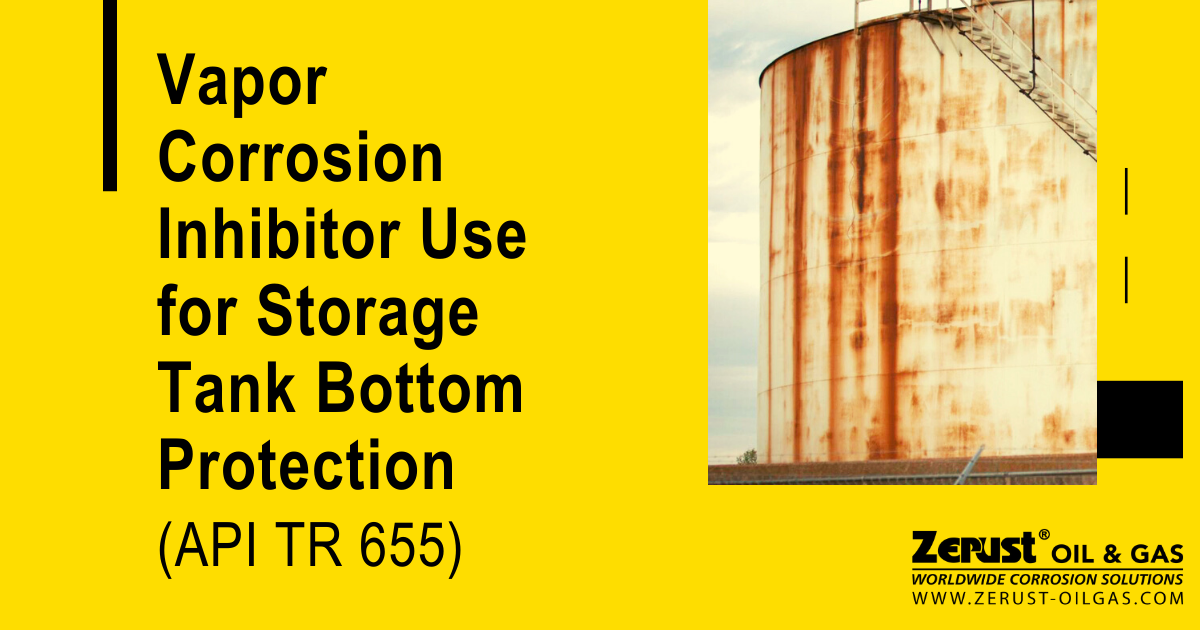
The American Petroleum Institute (API) has released its Technical Report (API TR 655) that discusses the use of Vapor Corrosion Inhibitors (VCIs) for the protection of aboveground storage tank bottoms from soil-side corrosion. This technique provides effective corrosion protection to tank bottoms, comparable to existing cathodic protection (CP) systems, and a large body of client field results has been synthesized into API-655.
Vapor Corrosion Inhibitors (VCIs) – An Overview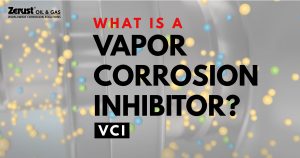
In API-655, the discussion is limited to the use of the amine-carboxylate group of VCI chemistries specifically applicable to soil-side corrosion protection of carbon steel bottoms. The protection mechanism of VCI chemistry is widely known and has been used in various industries since the 1970s.
A VCI molecule typically has a vapor pressure higher than air and volatizes into a gas molecule. The partial pressure differentials allow the VCI vapor molecules to permeate through air space until a steady-state concentration is reached, in an enclosed setting.
As the molecules settle on metal surfaces they provide protection against corrosion through various mechanisms (barrier, scavengers, film forming, pH buffers, etc.) depending on the chosen VCI. The VCI chemistry source allows it to maintain a dynamic steady-state equilibrium, providing ongoing corrosion protection to the tank bottom plates. Once the source VCI chemistry is depleted, the VCI can be replenished to provide continued corrosion protection.
The existing technique of CP is outlined in API-RP-651, which also mentions some limitations of the CP technique and several scenarios where the CP cannot be used or is not applicable. The newly released TR – 655 document by API discusses the use of VCI to fill the gaps that cannot be addressed using CP technique.
Click here for more information about VCIs.
API-655 & Tanks in Terminals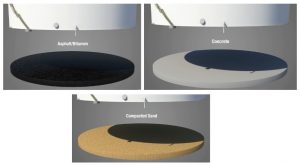
Most tanks in terminals do not have an active corrosion protection system and only use simple foundation designs such as bituminous sand or oiled sand on top of compacted soil, gravel or cement concrete, as a corrosion prevention system. Even though these foundation designs provide some corrosion protection at the initial stages there are often issues in the long term; bituminous layers, for example, typically dry after a few years and the intrusion of rainwater, oxygen and contaminants from the surrounding areas cause corrosion on the bottom of the tanks.
CP systems are not compatible with these foundations and cannot be installed. Section 4 of API-655 talks about different foundation types and VCI application methods to prevent corrosion in those scenarios.
Addressing Specific Limitations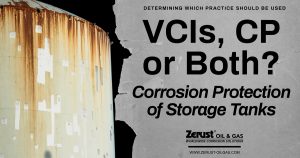
For tanks with a concrete ring wall and compacted sand foundations, annular plate corrosion is a significant industry concern where corrosion occurs on the bottom edge of the chime where the annular plate rests on concrete ring wall.
The existing technique of CP is a recommended practice by API (API-651) does not provide any guidelines in preventing annular plate corrosion and only recommends using washed river sand in the base.
For most tank owners it is not always possible to obtain washed river sand due to economic reasons. And, even though most tank owners take steps to provide good quality sand for tank foundation pads, the integrity of clean sand cannot be assured over the life of the tank bottom.
For such specific limitations, Section 5 of API-655 talks about how VCIs can be introduced into to sand as “additives” to negate the effect of corrosive species occurring in the sand. The document further illustrates this with different VCI installation methods and the benefits of using VCI to mitigate corrosion.
When the volume of liquid/product stored changes with filling/emptying the tanks, the bottom plate flexes and gaps/voids are created between the bottom plate and the foundation pad, CP cannot provide protection through these gaps. Excessive corrosion can occur on the bottom plates in these void areas and potential leaks can occur which can cause spill hazards, heavy fines for cleanups and in compliance with regulatory requirements.
To address this issue, tank owners can implement VCI and CP combined techniques to provide adequate corrosion protection and be compliant with regulatory guidelines. Section 7 of TR – 655 document discusses the synergies of using VCI and CP combined techniques.
Click Here for a detailed article by Sujay Math, Ph.D., MBA. explaining How to Determine Whether VCIs, CP, or Both Should be Used to Protect ASTs from Corrosion.
Financial Implications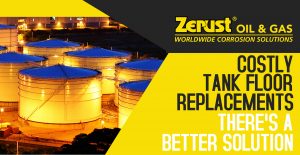
Increased life of the tank bottom ensures continued operation of the storage tank and increased return on investment (ROI). To achieve maximum ROI, owners expect the tank to be in service for 20 years which is specified as the maximum out-of-service (OOS) maintenance cycle by API – 653 standard. This can be achieved by using proper monitoring techniques to determine corrosive environments under tank bottoms and estimating ongoing corrosion rates.
If the tank bottom is determined to be corrosive, and aggressive corrosion rates are observed, VCIs can be introduced while the tank is in-service to slow the corrosion rate to meet the next specified OOS cycle. Section 6 of TR – 655 document discusses various monitoring techniques using steel coupons and ER probes, the document also provides guidelines for VCI replenishment using the above mentioned monitoring techniques.
Regulatory Requirements
Aboveground storage tanks in the continental United States of America which are deemed as ”breakout tanks” under the US Department of Transportation’s (US-DOT) Pipeline Hazardous Materials Safety Act (PHMSA) regulations, are required to have cathodic protection systems to be in compliance with their regulatory requirements. While the use of VCIs will be evaluated by PHMSA, in the short term, tank owners need to take additional measures if CP is not providing adequate protection to all areas of the tank bottom.
Conclusion – VCIs an Effective Corrosion Mitigation Technique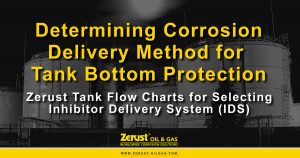
The tank bottom corrosion protection industry has tried several techniques over the years to prevent aggressive corrosion of the bottom plates. Every technique that provides a benefit also comes with certain limitations, and most owners agree that having another “tool in the kit” to use by itself or in conjunction with other available tools, can reduce life cycle costs and extend the life of these assets.
VCIs have emerged as an alternative technique that will also complement the limitations of existing corrosion preventive techniques. VCIs can be used with most foundation types, with or without cathodic protection. As API and AMPP (formerly NACE) are publishing technical reports and recommended practices, we at Zerust believe that VCIs can be used on most AST bottoms as an effective corrosion mitigation technique worldwide.
Purchase API TR 655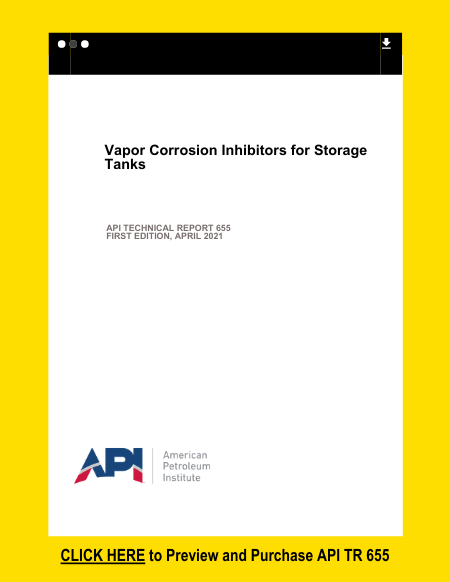
If you are interested in purchasing API TR 655, visit the API Publications Store. It is also available from other standards document providers.
Have You Updated Your Company Specifications to Include VCIs for Tank Bottom Protection?
If you haven’t, please allow our team of experts to help. Click Here to Get in Touch

